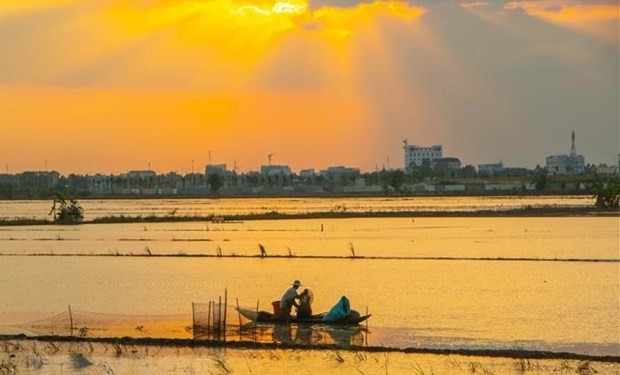
Mekong Delta hoped to see development breakthroughs
Latest
 |
| Fishing on a flooded field in Vi Thuy district of the Mekong Delta province of Hau Giang. (Photo: VNA) |
The Mekong Delta comprises Can Tho city and the provinces of An Giang, Dong Thap, Long An, Tien Giang, Vinh Long, Ben Tre, Tra Vinh, Soc Trang, Hau Giang, Bac Lieu, Ca Mau and Kien Giang. It is one of the largest and most fertile deltas in Southeast Asia and the world.
At a conference on the implementation of Resolution No. 13/NQ-TW on April 22, Party General Secretary Nguyen Phu Trong emphasised several advantages of this region, including its strategic location.
The Delta is next to the southeastern region, including Ho Chi Minh City - the southern economic hub of Viet Nam, and adjacent to Cambodia to the north, the Gulf of Thailand to the southwest, and the East Sea to the southeast.
The region is close to the East-West shipping route and also traversed by many important international air routes that connect South Asia and East Asia, along with Australia and archipelagos in the Pacific Ocean.
It boasts a 700km coast, accounting for 23 percent of the country’s total coast, as well as about 360,000 sq.km. of the sea, continental shelf, and exclusive economic zone. It is also home to the Tho Chu and Nam Du archipelagoes and Phu Quoc Island, which are critically important to the control of shipping routes through the East Sea to the Pacific Ocean and the Indian Ocean.
The Mekong Delta is the biggest food, fishery and fruit production hub in Viet Nam, and has four Ramsar sites (wetlands of international importance), while holding huge potential for the oil and gas and renewable energy sectors.
General Secretary Trong said despite its rich potential and advantages, local development remains slow, adding that the successful implementation of Resolution No. 13/NQ-TW will help the region join the whole country in taking greater strides forward.
Over the years, the Government has issued many policies to boost socio-economic development in the Mekong Delta. Thanks to those policies and their own efforts, the 13 localities have witnessed strong improvements and currently contribute to about 50 percent of the total rice output, 95 percent of the rice export volume, 65 percent of farmed fishery output, 60 percent of fish export volume, and 70 percent of fruit production in Vietnam.
Besides, transport infrastructure has also gained a facelift with a national highway network stretching nearly 2,690km, up 52 percent from 2002.
Nguyen Huu Thien, an independent expert on the Mekong Delta ecology, held that if the region manages to surmount difficulties and challenges, it can become a role model for other deltas around the world.
























